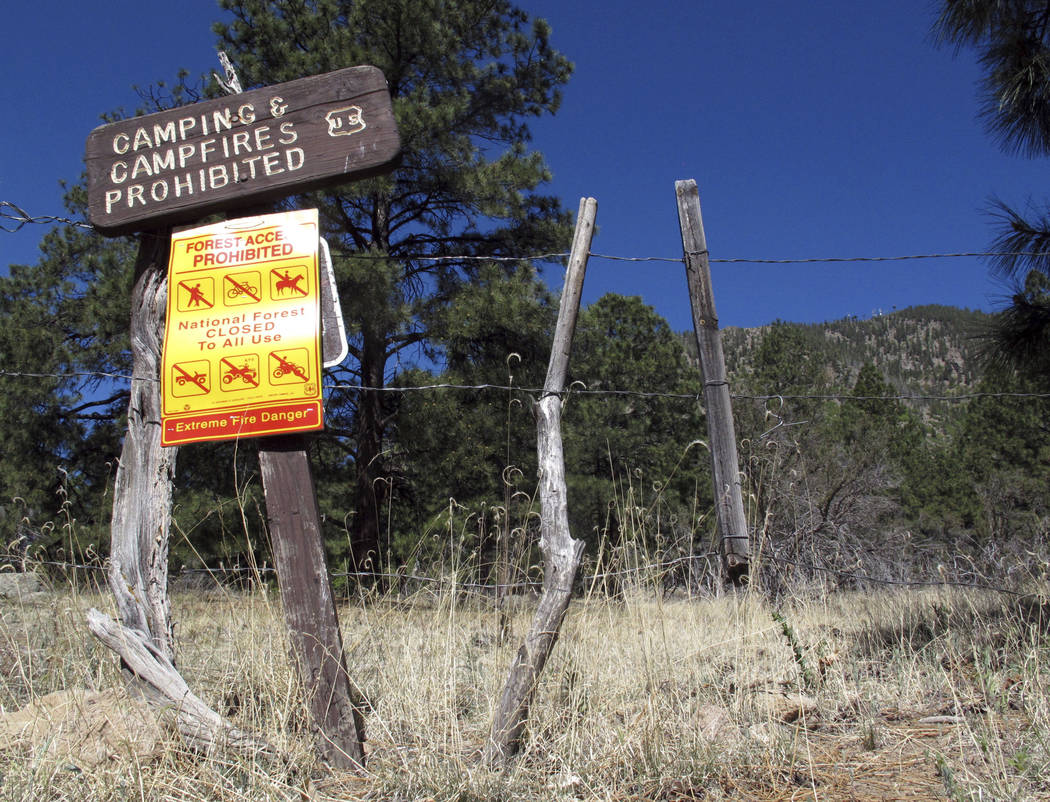Dry winter, beetles damaging forests in Arizona, New Mexico
FLAGSTAFF, Ariz. — Aerial surveys of forested land in Arizona and New Mexico show large swaths of dead trees following an unusually dry winter that aided pests such as bark beetles.
Arizona saw its largest uptick in tree mortality since the early 2000s when about 1.7 million acres were affected.
New Mexico saw a similar pattern, though surveys done earlier this year don’t account for an expected loss of pinon trees, said Andrew Graves, an entomologist with the U.S. Forest Service’s Southwest Region.
The surveys included national forests and other federal land as well as state, tribal and private land.
Graves said the Forest Service will use the maps it created while flying above the treetops to identify those areas where it can take a closer look on the ground next year, particularly in areas popular for recreation. Officials will use the information to produce a report on forest conditions.
The survey results aren’t a surprise because much of the nation’s forest land is overcrowded, forcing trees to compete for resources and making them less resilient.
“It stresses them out, and then as soon as something else comes along like a drought, that makes them weak and susceptible to beetles,” said James Youtz, a silviculturist in the southwest region of the Forest Service.
Bark beetles about the size of a grain of rice are the pest most often blamed for killing trees. Using their sensitive antennae, they’re attracted to the chemicals given off by unhealthy and stressed trees. When they find one, they make themselves at home, thwarting the flow of sugars and nutrients to a tree’s roots and implanting fungi that clog its water system.
From the air, surveyors identify dead trees as those with yellowing, red or brown needles, or without needles.
The beetles might move on to another tree the same year or spend the winter in the tree growing their population by thousands before heading out when the weather warms up in search of other trees.
Healthy trees can resist attacks by using their sap to push out beetles as they try to bore into the bark.
The situation is similar across the West. An outbreak of mountain pine beetles that started in the Rocky Mountains is killing lodgepole pine from Colorado to Canada in one of the largest outbreaks ever recorded, forest officials say. Alaska is experiencing a spruce beetle outbreak.
In Arizona, surveyors found bark beetles have killed trees on about 300,000 acres this year, slightly more than a spike in 2013 but far less than a decade earlier. Much of that was in the eastern part of the state.
In New Mexico, trees have died on about 120,000 acres surveyed this year largely because of bark beetles, Graves said.
Ponderosa pine trees have suffered most of the damage, but Engelmann spruce in New Mexico has also been affected.
The bark beetles killed trees on four times the acreage in New Mexico this year as last year. The Forest Service linked that to drought.
“Once the rains return, the forest does respond pretty quickly and the level of mortality drops off pretty rapidly within a year or two,” Graves said.
Other insects target leaves or foliage, leaving them alive but weak.
Youtz said he’d like the forests to look more like they did historically — a mosaic of grasses, shrubs and trees of all ages. That’s the goal of a large-scale thinning project in Arizona that has fallen short because it’s costly and there’s not much of a market for smaller diameter trees. Bark beetles and wildfires can be unintentional thinning tools.
“We’re not going to create the way it was in the 1880s,” he said. “But if we can get close to that, we believe our forests will be more resilient to all stressors.”


















